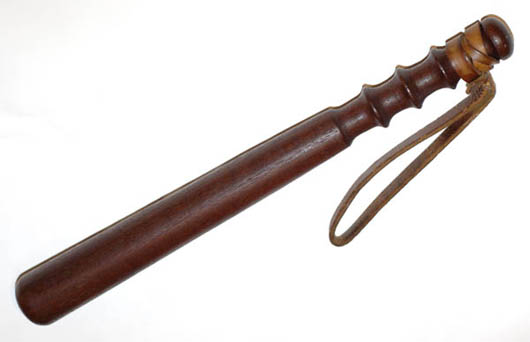Dewey 21C: September 2009 Archives
Ted is on the road right now, in Japan, Korea, and Abu Dhabi. He's leading arts education work in those cities in advance of the New York Philharmonic musicians who are on tour.
Ted wanted to share some of his experiences with you, and I am just thrilled about it.
************************************************************************************************************
Howard Gardner tells the story of his toddler son, while the family was staying in a hotel in China, having fun each morning trying to get the room key into the slot where guests deposit keys when going out in the morning. The slot in the wall matched the unusual shape of the key's plastic tag, and the child would happily bang at the slot until the tag happened to line up and the key would drop in. After several days of this, a kindly Chinese woman intervened, guiding the child's hand just so, to make the key slide in perfectly - with an air of pity for an American father's incompetence in the right education of the young.
How do different cultures view learning? In China, as in much of Asia, learning is a process of internalizing the wisdom of the ages. Creativity is an increment one can offer to the great tradition only when one has achieved some level of mastery. In the West, learning has come to be about constructing one's own knowledge, with creativity in the very act.
This distinction has become an ongoing obsession and challenge for me and for the Teaching Artists faculty of the New York Philharmonic. For the fourth year running, and the sixth time overall, Philharmonic TAs have touched down in Japan for a residency, building on recent experience in China and Korea. "Become a Teaching Artist - see the world!" may not be one of the standard inducements to the field, but the New York Philharmonic, with its two international tours most seasons and its highly evolved Teaching Artist practice, has lately become a laboratory for international exchange on music learning and Teaching Artistry. On the current Asian Horizons tour, different teams of TAs will carry out different projects in Niigata and Tokyo; in Seoul; and for the first time, in Abu Dhabi, UAE.
Yesterday, in Nagaoka, we visited a lab school run by Niigata University's Faculty of Education. The school's literature presents an educational philosophy of inquiry growing out of puzzlement and leading to leading to growth - a cycle quite recognizable to esthetic ed adepts. The faculty of the school and the university had invited us to aid their search for new models of learning and creativity. The elementary music teacher has begun introducing composition into her classes, anticipating a new national curriculum that will demand more creativity. When the Teaching Artists Ensemble played music that had been composed by eight Tokyo ten-year olds this summer, through our Very Young Composers program, they were as astonished as audiences everywhere, but whereas many Japanese musicians react to children's music by trying to debunk it - someone must have done this for them! - the Nagaoka teachers wanted to understand how it was done and try it themselves.
There is a hunger too among some musicians in Japan for the skills we continually work at in New York, to connect music with audiences, especially new audiences and young audiences. Life With Music Project is a musician-run non-profit that has been our partner in all of our schools work in Japan, and for the first time, two Japanese musicians joined the Teaching Artists Ensemble to help create and perform our interactive in-school concerts (featuring those Tokyo kids' works along with music of Lou Harrison, Johannes Brahms, and Teaching Artist Justin Hines). Progress is slow but real in spreading the idea of activist musicians, and of schools that welcome professional artists for more than perfunctory performances.
But as we continue this year's journey, I keep thinking of the weight of tradition, the millennia of wisdom that musicians and educators here must respect as they devise new ways of teaching and learning. Sometimes I even wonder whether our work could be dangerously subversive. Once a Japanese child has heard her own music performed by the New York Philharmonic, how can she go back to being a vessel in need of filling?
***********************************************************************************************************
Theodore Wiprud
Director of Education, New York Philharmonic
Theodore Wiprud has directed the Education Department of the New York Philharmonic since October 2004. The Philharmonic's education programs include the historic Young People's Concerts, the new Very Young People's Concerts, one of the largest in-school program of any US orchestra, adult education programs, and many special projects.
Mr. Wiprud has also created innovative programs as director of education and community engagement at the Brooklyn Philharmonic and the American Composers Orchestra; served as associate director of The Commission Project, and assisted the Orchestra of St. Luke's on its education programs. He has worked as a teaching artist and resident composer in a number of New York City schools. From 1990 to 1997, Mr. Wiprud directed national grantmaking programs at Meet The Composer. During the 1980's, he taught and directed the music department at Walnut Hill School, a pre-professional arts boarding school near Boston.
Mr. Wiprud is also known as a composer and an innovative concert producer, until recently programming a variety of chamber series for the Brooklyn Philharmonic. His own music for orchestra, chamber ensembles, and voice is published by Allemar Music.
Mr. Wiprud earned his A.B. in Biochemistry at Harvard, and his M.Mus. in Theory and Composition at Boston University, and studied at Cambridge University as a Visiting Scholar.
September 2008
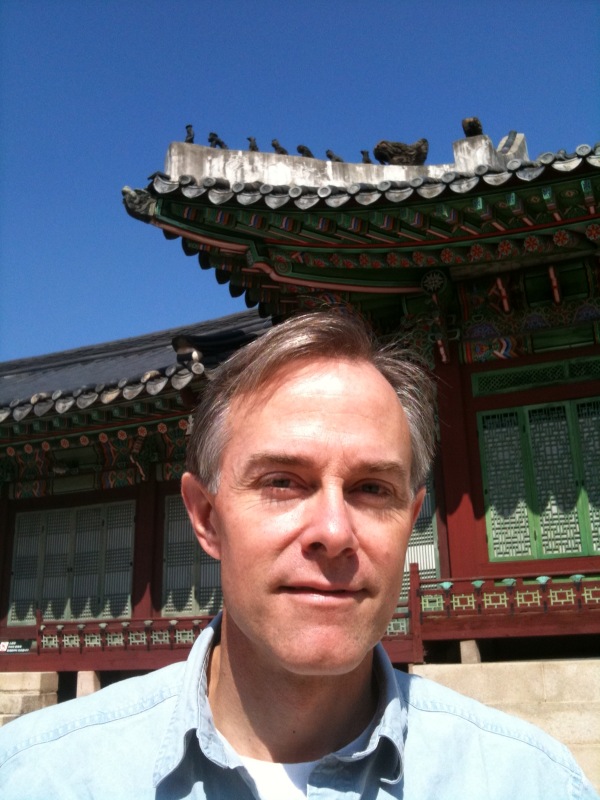
That's right the USDOE is looking for peer reviewers for it's Race to the Top Fund.
So, if you have "experience providing thoughtful, objective, constructive, and timely oral and written feedback to applicants and/or organizations on successes and opportunities for improvement," or a "deep understanding of teaching and learning, specifically K-12; or an "understanding of and experience with implementing student-achievement-focused reform plans at scale in order to know what approaches have the greatest likelihood of success at the school, district, and state levels," or a whole host of other possible qualifications that you can read below, see the instructions at the bottom and good luck!
Direct link to Duncan letterAugust 31, 2009Dear Colleagues:
The U.S. Department of Education is seeking recommendations for reviewers for the $4.35 billion Race to the Top Fund competitive grant program. This program presents an unprecedented opportunity to support far-reaching improvement in schools across the country. Therefore, we hope to assemble panels of our nation's most distinguished educators, policymakers, and scholars to participate in the review process for this ambitious reform initiative. I am writing to ask for your help in identifying candidates for consideration.
Advancing school reform is the key to America's long-term prosperity, and this is an important moment because we have the resources in the Race to the Top Fund to dramatically improve our nation's schools. This historic investment in school reform will reward and provide incentives for states that have created the conditions for transformational change, set ambitious goals around improving student outcomes, and developed clear and comprehensive plans to reach those goals. The Race to the Top Fund focuses on four key areas of education reform:
- Adopting standards and assessments that prepare students for success in college and careers;
- Recruiting, developing, retaining, and rewarding effective teachers and principals;
- Building data systems that measure student success and inform teachers and principals on how they can improve their practices; and
- Turning around our lowest-performing schools.
Please let us know as soon as possible and no later than September 30, 2009, if you and/or qualified individuals you recommend would be interested in serving on a panel to review Race to the Top Fund applications. I encourage you to share this letter with anyone you feel is qualified. For more information about the review process or about applying to be on a panel, please read on.
Thank you so much.
Sincerely,
/s/Arne Duncan
Qualifications of Reviewers
The Race to the Top team is seeking 50 to 80 individuals that represent wide ranges of experience to serve on peer review panels. The U.S. Department of Education (Department) is seeking individuals with expertise in some, if not all, of the following areas to serve as reviewers of applications for the Race to the Top Fund:
- Education Policy
- Policy implementation experience and/or legal expertise
- Education Reform
- Deep understanding of teaching and learning, specifically K-12
- Broad understanding of each of the four education reform areas (standards and assessments, teachers and school leaders, data systems, school turnaround), and specific expertise in at least one of these areas
- Demonstrated experience in implementing or supporting reforms that led to improved student outcomes
- Deep understanding of using data to inform continuous improvement at the classroom, school, district, and/or state levels
- Understanding of and experience with implementing student-achievement-focused reform plans at scale in order to know what approaches have the greatest likelihood of success at the school, district, and state levels
- Capacity and Scale
- Knowledge of effective operational and organizational/management infrastructures at state and district levels (e.g., people, processes, accountability structures, technology systems, program and grant management)
- Ability to assess the effectiveness of leadership teams and key contributors
- Knowledge of or experience with relationships between states and districts, as well as successful engagement of diverse stakeholders at each level
- Application Review and Evaluation
- Experience participating in (as an evaluator) or managing state, federal, and/or philanthropic grant reviews (preferably with experience in applying scoring rubrics and specific criteria to this process)
- Experience providing thoughtful, objective, constructive, and timely oral and written feedback to applicants and/or organizations on successes and opportunities for improvement
Reviewers will work individually and on a panel with other reviewers to evaluate and score applications. Panels will be unbiased and balanced according to areas of reviewers' expertise. The Race to the Top competition will have two phases, and reviewers may participate in one or both phases. Reviews are anticipated to take place between January 2010 and March 2010 for Phase 1, and between June 2010 and September 2010 for Phase 2. Reviewers will participate in a total of approximately 6-12 days of review, some of which may be in Washington, DC, and some of which will be done remotely. Reviewers will receive an honorarium for their time.
Application Process
We encourage you to forward this letter to those you feel are qualified. You may send us a list of people you recommend, and of course you may submit your own application. To apply, please submit a cover letter and curriculum vitae to racetothetopreview@ed.gov. For those you recommend, please include their name, e-mail address, phone number, organization, and title, and we will contact them. We strongly encourage you to submit your applications and recommendations as soon as possible; all applications must be submitted by September 30, 2009.
Conflict of Interest
Please be aware that any applicant's selection as a peer reviewer for the Race to the Top Fund competition will include a review for possible, apparent, and/or actual conflicts of interest. All applicants will be required to complete a conflict of interest questionnaire. The questionnaire generally seeks to obtain information about the applicant's professional experience(s), including any financial interest that the applicant may have in any state's Race to the Top Fund application. If a potential conflict of interest is identified, the Department will consider whether the applicant can participate as a peer reviewer in full compliance with all applicable Department policies and procedures. In this way, the Department is able to ensure the objective and efficient management and administration of the Race to the Top Fund program, which ultimately ensures the integrity of the Department's functions and the public's confidence in that integrity.
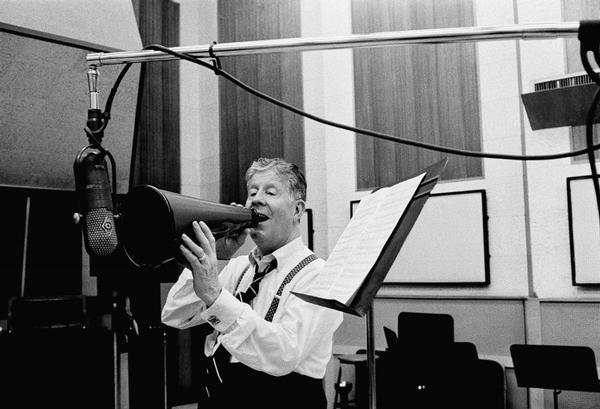
A lot of people have been wondering about NCLB. Here comes Duncan today with a big speech about NCLB, essentially moving it from the back to one of the front burners. Secretary Duncan wants it reauthorized by early 2010. They're going to be busy over at the USDOE.
Highlights of speech are:
"But the biggest problem with NCLB is that it doesn't encourage high learning standards," Duncan said. "In fact, it inadvertently encourages states to lower them. The net effect is that we are lying to children and parents by telling kids they are succeeding when they are not."
His priorities include: extended learning time, using data to track student and teacher effectiveness, and systems to better measure individual student progress.
Read his entire speech by clicking here.
What I hear from people closely following this area is that complaints about the amount of testing is resonating in many quarters, and that the quality of tests will be a much greater focus. This is pretty clear in how the development of new assessments is a big part of Race to the Top.
Are you wondering how arts education fits in? Stay tuned.
As George Harrison once sang: "It seems like years since it was clear."
 Once upon a time, most public schools had substantial arts education,
with music and art most often recognized as the formal, official art
forms. Dance and theater more often appeared as extracurricular
activities, i.e., drama club. For many, many years, classroom teachers
were expected to be able to teach the art forms. Primary school
teachers were required to have a rudimentary knowledge of the piano,
and teach dance, art, music, and drama in grades K-6. Many systems did
not offer arts specialists licenses in the primary grades until the
late 20th century.
Once upon a time, most public schools had substantial arts education,
with music and art most often recognized as the formal, official art
forms. Dance and theater more often appeared as extracurricular
activities, i.e., drama club. For many, many years, classroom teachers
were expected to be able to teach the art forms. Primary school
teachers were required to have a rudimentary knowledge of the piano,
and teach dance, art, music, and drama in grades K-6. Many systems did
not offer arts specialists licenses in the primary grades until the
late 20th century.The true comprehensive high school as affirmed by James Conant starting in 1959, gave great cause for arts education to expand, as a broader curriculum with expanded teaching staffs created a greater supply of secondary level arts education than ever before.
This period was fairly simple in terms of the variety of approaches to instruction, and indeed the architecture of K-12 arts education. School faculty taught the arts; arts organizations enhanced this instruction minimally, mostly through field trips. Most of the approach was disciplined-based; little was integrated. The teaching artist as formal entity had not yet appeared and arts education was dominated by traditional Western forms. In many ways it parallels the overall arts field itself: the forms were well defined and there were fewer of them. The modes of distribution and dissemination were much, much more limited.
The big bang of arts education occurred in the 70's, when a combination of a difficult economy, back-to-basics movement, and other assorted and sundry pressures and reforms created a gradual decline in arts education, particularly in the large urban school systems.
The big bang led to an expansion in what had been a relatively minor area in the non-profit arts sector: the arts education organization. I guess you can say the arts education organization as we know it was created during this big bang. In addition, we saw an expansion of arts education departments within arts organizations. Some of the organizations were created to be short-term, meaning to fill the gap or serve as a bridge until the arts teachers returned. Only, that never quite happened.
In many ways the big bang can be best observed and understood through the wide array of approaches to instruction that occurred in its aftermath: arts integrated across the curriculum; aesthetic education; youth development programs; and more. Add to this the emergence of the teaching artist, and you've got quite a different lot today than in 1959. Arts education split into many different pieces, much of which continues to cause great debate among practitioners.
At the same time, the arts as we know it have changed dramatically too. The field is much bigger, the modes of dissemination have changed drastically, the ways in which we categorize the various disciplines has changed dramatically, including new categories as well as the blending of categories. Thanks to technology, people can create art as never before, in their own homes and share it with a world in ways unimaginable 30 years ago. For instance, you can learn to compose, in your home, without a teacher, without coming in contact with musicians--without playing a traditional instrument.
I guess you could also liken the change to Humpty Dumpty. That's right, all the kings horses and all the kings men couldn't put arts education together again. Though that doesn't stop people from trying.
While I don't question the importance of quality, I do think that some of the discussions about quality track to this big bang. The pursuit of quality through instructional materials, through standards, through training, through compliance, and so much more.
On one hand, it's remarkable, for many of those driving education policy and even leading school systems don't give a damn about quality: they care about numbers. Metrics define the quality. And, in some ways you can't blame them. It's much harder to pursue quality through the lens of the art of teaching and learning. NCLB attempts to do this, from the perspective of teacher quality, through metrics associated with credentials, i.e., "how many teachers are teaching out of license?" Real teachers and administrators, practitioners, will tell you that approach doesn't do much for understanding quality. Others want to judge teaching quality by the scores on standardized tests. Still others have taken a much tougher road: at one point the Dayton, Ohio teachers union developed a significant peer review system.
Can you tell quality of an orchestra by how many subs are hired or how many tickets are sold? Does the short-term interest in an artist really tell us about the quality of the work?
In the name of quality, I've seen first-hand the attempts to bring back the architectures of the fifties, the structure of certified arts teachers, enhanced by teaching artists and arts organizations, and while progress has been made in many places, it's still a Humpty-Dumpty situation. It's a different field today, that continues to change just as the arts continue to change. It can never be put back together again, the promise is in the reshaping, the rethinking, and I believe in finding ways to create a virtuous cycle between teaching and learning in arts and education, to practice in the art forms themselves, however you may define them. Another way of putting it would be to ask how certain qualities of art making, artistic sensibilities--ways of thinking and knowing, can positively affect education, and vice versa.
 Education
seems to be very trend oriented. I think that the reliance on metrics
should soften, and that the pendulum will shift to something more
favorable. I also think, or really should say that I would like to think that the wave of "let's reform the schools so
the function like corporations" will wane, as more and more people see
the good and bad of an unfettered free market and the out of control corporate culture.
Education
seems to be very trend oriented. I think that the reliance on metrics
should soften, and that the pendulum will shift to something more
favorable. I also think, or really should say that I would like to think that the wave of "let's reform the schools so
the function like corporations" will wane, as more and more people see
the good and bad of an unfettered free market and the out of control corporate culture. Click here to view the press release about the Public Advocate Questionnaires
Click here to view the completed questionnaires for:
Bill DeBlasio, Democrat
Mark Green, Democrat
Alex Zablocki, Republican
DeBlasio and Green are facing off in a runoff election to determine the Democratic candidate on September 29th.
Shortly, I will post the responses for the leading candidates for Mayor, namely Michael Bloomberg and William Thompson.
And for fun, here's a link to Pat Paulsen for President.
And before that, there was my hero, W.C. Fields, who also ran for President.
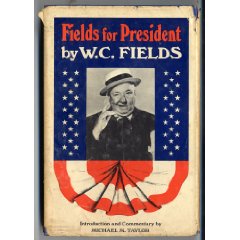
It's great to read about students at the very top of high school arts education in New York City.
At the same time, it makes me think back to when I graduated high school, when in addition to LaGuardia (then it was two separate schools: Music and Art High School and The Performing Arts High School), you didn't have to audition for and depend on a specialized schools because so many of the schools had superb programs. It was evident through the all-city music program, where so many students came from schools from all around the city, often beating out kids in the specialized schools for slots in the then coveted and highly super competitive all-city programs.
At any rate, for a good sense of what it takes to get a first class high school arts education, click this link to read an article from the New York Daily News: 'Fame' Inspiration: Getting into LaGuardia High School Requires All the Right Moves.
Dana's current issue of Cerebrum features How Arts Training Improves Attention and Cognition.
Does education in the arts transfer to seemingly unrelated cognitive abilities? Researchers are finding evidence that it does. Michael Posner argues that when children find an art form that sustains their interest, the subsequent strengthening of their brains' attention networks can improve cognition more broadly.I have always thought that of all the prospective research that could bolster arts learning, that it was this line of research, meaning research on the brain, that held the most promise.
This is something that all concerned with arts education should take the time to read and think about.
Nice work, again, from The Dana Foundation.
Which reminds me, I've been meaning to contact Janet Eilber at Dana (and Martha Graham!) to see if she'll do an interview for Dewey21C....I will have to get hopping on that...
Click here to read Checker Finn's September 9th speech to Rice University's Educational Entrepreneurship Program.
Hirsch wants a new K-8 curriculum, for instance. The NEA (National Education Association) wants more of what it's always wanted. Charter critics want tighter regulation. Some Republicans want greater freedom for states and parents. Some Democrats want less freedom. Arne Duncan wants to transform the lowest 5 percent of schools. A bunch of people are obsessed with 21st Century skills. The Gates Foundation wants more people to go to college. McKinsey wants us to be more like Singapore. There's simply no consensus here. Instead there are cracks, rifts and faults, lines in many directions
Click here to read more about Checker Finn.

Click here to read the transcript or listen to the segment online.
So, listening to brainwaves is kind of weird and fun, but why care so much about the brainstem? Well, how good a job it does recording sound is a crucial step in the process of hearing. Understanding how exact the recording is, or where it might get fuzzy, can tell us about a person's reading problems, or why she has a hard time focusing on her teacher in a noisy classroom. And that's where the music comes in.
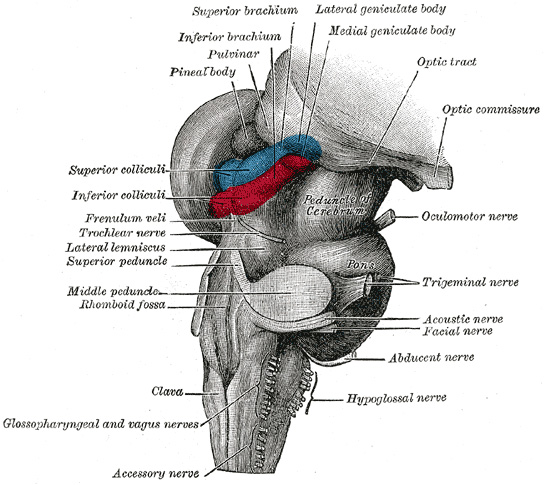
Supporters of P21 think their critics are overreaching and failing to recognize that the P21 movement has indeed embraced content. Those concerned about P21 see it as something that is untethered from content and therefore disconnected from quality teaching and learning. They also believe that it is nothing new but the rehashing of an old educational fad.
Right now P21 is big with the arts education field, so its particularly interesting to point you in the direction of the National Journal Online, which has an evolving group of education leaders blogging on a variety of issues.
Click on this link to to read what some heavy hitters have to say about P21, including Andrew Rotterham, Sandy Kress, and Diane Ravitch. They are all responding to a piece in The Washington Post, by Jay Matthews, where he slammed the P21 movement. The question posed to the panel is: "Has the P21 Movement Succeeded?"
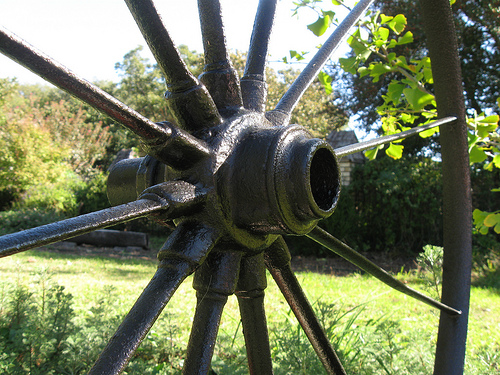
While I have misgivings about posting this blog during the traditionally quiet week before Labor Day, I just couldn't resist. I may repost it next week, just to make sure it isn't missed.
"As to the report itself, I don't know whether to laugh or cry. Or maybe the appropriate response is a shrug...except that we're talking about kids's lives."
Technically speaking, the photo below is a truncheon...
